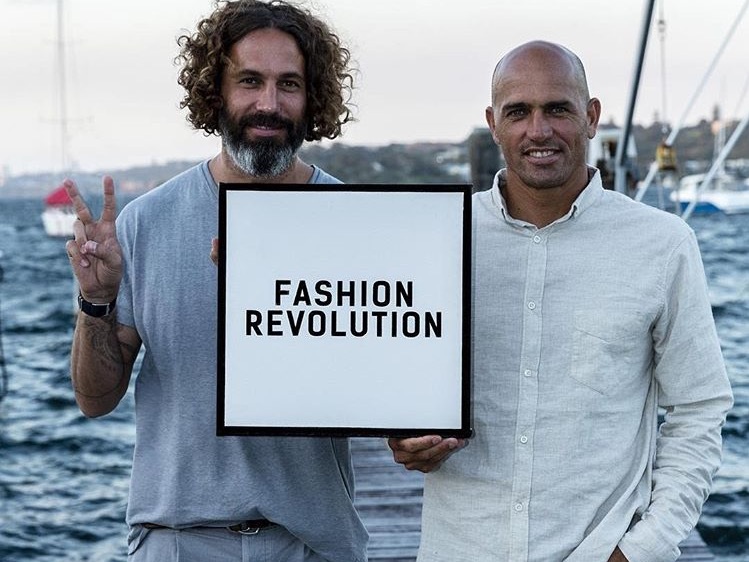Transparency, education and value: The shift to ethical fashion
John Moore & Kelly Slater founded sustainable menswear brand Outerknown to "smash the formula". Image: Outerknown
I was contacted recently by a uni student doing a feature article on ethical and sustainable fashion.
I was so glad to see this was a topic worth writing about, and I was chuffed to be asked to give my thoughts.
Her questions really got me thinking, and I realised there were some key themes in my responses.
Both consumers and companies have responsibilities when it comes to ethical decisions.
Consumers alone cannot be held responsible for making "unethical" decisions.
From a consumer’s perspective, a great way to think about it is we vote with our purchasing decisions.
Our dollar equals a vote.
When we buy something, we are supporting that brand, that organisation, meaning we support what they are doing and what they stand for too.
But how do we have any idea if we're doing the right thing!?
This is where brand transparency comes in, so we as consumers have some sort of assurance these brands are doing their part to ensure safe working conditions and a reduced environmental impact.
Companies have an obligation to know everything that goes on in their supply chains so they can pass on that information for us to make informed decisions.
Brand transparency is a big part of the consumer education process.
The real cost of fast fashion is slowly being uncovered.
But it relies on brands being open and honest about what they are doing.
There are some great initiatives as part of this transparency and sustainability movement, like the annual Fashion Revolution campaign and the ethical fashion index reports released earlier this year.
But these reports don’t come without problems - some brands ranked really poorly simply because they chose not to participate and didn’t have enough information available for the report writers to make an accurate assessment.
But it’s a start, and it gets people thinking.
Events like Undress Runways and Brisbane City Council’s Revive second-hand fashion festival are also proving a fun way to get people thinking about their choices.
Brisbane City Council’s Revive Fashion Featival is a great way to get us thinking about the impact our choices make.
The Good On You app is another great example of empowering consumers to make better spending choices, and documentaries like The True Cost being free to view also adds massive weight to the education process.
We're rarely exposed to the eco-impacts of fashion.
While ethical working conditions is a hugely important part of the fashion industry’s much-needed transformation, the negative environmental impacts also present a massive challenge.
The ecological impact of fashion is something we're exposed to even less, if at all.
It’s kind of like landfills: out of sight, out of mind.
I'm really hopeful initiatives like those above, as they become more mainstream, will allow for greater consumer awareness leading to action.
I am also optimistic (always!) that as new brands emerge, doing things ethically and sustainably will simply be the only way to approach business - it’s happening, I'm writing about it all the time!
Australian-made Vege Threads is tackling both human and environmental issues in fashion. Image: Vege Threads
There's a massive disconnect between price tag and value: the conditioning issue.
We have been conditioned for so many years (particularly the X and Y generations) that clothing can be - so should be - really cheap.
So when we see items that are priced as they should be, we’re shocked! Why would we pay $60 for a t-shirt when we can get one for $6, in a wider range of colours, in many more stores?
But a higher-priced item doesn't equal ethical production, either.
Many brands are still trading off just that - their brand - relying on consumers trusting they are making high-quality items in good conditions.
The price-value gap will balance out over time.
As pressure mounts for brands to shift to ethical practices and become more transparent, and as consumers become more aware of the benefits of buying well-made and ethical goods, we will have a more realistic view of value.
Eventually, it will just be the way things are.


